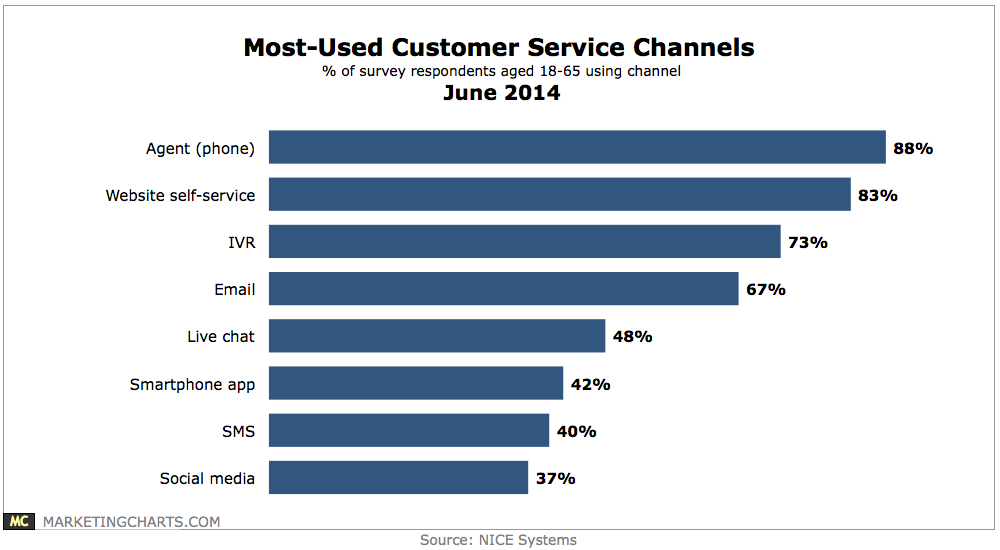Do you know what makes big brands like Amazon, Apple, and Samsung exceptional?
Besides their high-quality products, what really makes people stick to these brands is how brilliantly they handle customer complaints.
Dealing with customers is an art that requires perseverance and patience, more than anything else. So, whether you are a month-old startup or a multinational corporation, there is only one mantra that can keep your business growing, and that is:
Take every complaint as an opportunity to win customers for life!
While some customers will be easy to please, some will give you sleepless nights, ready to pounce on you at a single instance of inconvenience, and vent their frustration on social media.
Feels familiar?
Fret not as this blog is here to guide you on handling customer complaints gracefully and analyzing them to gain front-line insights.
Let’s turn every complaint into a golden opportunity to bring customers closer to your business!
What are Customer Complaints?
Customer complaints signal a customer’s disappointment with a business. They show a disconnect between what customers are promised and what they actually receive. This gap is often a result of faulty products, inadequate customer support, or sometimes even baseless assumptions from customers’ end.
Customer complaints pinpoint problems that you never knew existed and can help you gain front-line insights into what customers prefer and what they don’t.
For example, when a customer expresses disappointment regarding a delayed response on social media or any other channel, it is a formal complaint. Such complaints show that customers value fast responses over anything else, so you can take timely steps to turn your support process more efficient.
Below is an example of a customer expressing disappointment when not provided access to TV on a flight of 4 hours.

Types of Customer Complaints
Customer complaint handling is a challenging process. Knowing the different types of customer complaints will certainly help you devise the right strategy and use the right tactics for a delightful customer experience.
Let’s look at the common types of customer complaints that your support team may have to deal with.
2. Product-Related Complaints
These complaints are about a faulty feature or missing functionality in a product. Such complaints are also raised when customers are confused about working with your product.
How to handle this complaint?
If the complaint is about a faulty product or feature, dig further into the problem to understand what is wrong. If the product is really defective, get it replaced with a fresh one immediately. If there is a problem with a feature, see if your tech team can resolve the issue or guide the customer on how to correct it.
2. Long Wait Time
Customers expect instant gratification regardless of how a complaint is raised – via call, email, ticket, or social media. In fact, for 12% of customers, lack of speed is the number one cause of frustration. This figure can translate into mind-boggling numbers if not dealt with on time.
How to handle this complaint?
Take a step back and identify the workload of your agents. Are your agents always drowned in an ocean of customer complaints across channels? If yes, that means your small team is not enough to handle the heavy workload. Consider hiring more agents for a fast and efficient support process.
You can also adopt tools like an online knowledge base, live chat, and help desk. Club them to automate menial tasks and streamline the support process for maximum efficiency.
3. Product Delivery Complaint
Delay in delivery is one of the most common concerns of customers who purchase products online. The website promises delivery within 2 to 3 days, but in reality, it takes over a week for a product to reach the customer. The matter gets even worse when the product is delivered to the wrong address. This can be true even for companies that offer same-day delivery services.
This shows a disconnect between what a company promises and what the customers receive.
How to handle this complaint?
Your support team should immediately report these issues to the concerned department and ensure that the delivery is fast-tracked. Find out what is causing such delays and problems in the product delivery. Were there any transit issues? Was the product not dispatched on time? Once the issue comes to your attention, convey it clearly to the customer and immediately speed up the delivery process. Reassure customers that you will take extra care of product deliveries in the future.
4. Repeating Problems
Suppose you are frustrated about something and have to explain the issue to multiple people. You take deep breaths every single time to don’t lose your cool. Now think of your customers in a similar situation.
Around 72% of customers call customer service “poor” if they have to repeat their issues multiple times to multiple people. The need to repeat issues arises due to two reasons. First, when a service rep doesn’t heed the customer’s complaint. Second, when customers are transferred from one agent to another their time holds no value.
How to handle this complaint
A sure-shot way to handle such situations is to avoid transferring the customer to different agents. The transfer process is tedious and ends up frustrating customers even more. Instead, see if you can contact the subject matter expert internally and solve the problem without the painful call transfers.
A better solution would be to invest in help desk software. Modern help desk tools come with a round-robin ticket assignment system that automatically distributes customer complaints to agents who are best suited to handle them. It’s the best way to delegate work and ensure that agents are neither overwhelmed nor under-utilized.
5. Impolite Agents
Customer support reps are always at the frontline, representing your brand and talking to customers on your behalf. So, when they don’t seem fully invested in a customer, they put your brand’s reputation at stake. When reps talk in an uninterested tone, fail to resolve complaints or meet customers’ sky-high expectations, they send a message that your company doesn’t care enough.
How to handle this complaint
First of all, when such issues are reported, ensure that you gather enough details before coming to conclusions. Criticizing your reps is not going to solve the problem. Instead, reintroduce them to your company’s service quality standards and, if possible, provide them the required training to prevent such issues in the future. Explain that they are your company’s ambassadors, so their tone, body language, and how they deal with problems have a deep impact on your reputation.
Aside from these, you may encounter many other types of complaints on lack of follow-ups, out-of-stock products, and even the most minor issues that concern customers.
Now, before we learn about how to deal with customer complaints, let’s understand how we should analyze them in the first place.
How to Analyze Customer Complaints
No customer can ever be 100% satisfied. That means complaints will keep flowing, no matter how hard you try to keep customers happy.
Complaints are inarguably a great way to gain valuable pieces of feedback that help you improve and grow your business.
But to turn every complaint into a growth opportunity, you must analyze it to the core.
The first step of complaint analysis is to ask the right questions and get the right answers. Here are a few questions you should ask yourself and your team to gain deeper insights into customers’ pain points:
- How frequently do we receive a particular complaint?
- Which channels do customers use to raise complaints?
- What type of complaints do we receive the most?
- Which departments do the complaints belong to?
- Have the resolutions provided in the past worked for customers?
- Has the support team recorded these resolutions in the self-service help center?
- How complex and urgent is this complaint?
A rigorous analysis will help you find and fix the root cause of the complaints, identify patterns, and take practical steps to reduce customer complaints.
8 Tried and Tested Tips for Customer Complaint Resolution
All growth-focused businesses have one thing in common. They constantly face the question – “How to handle customer complaints?” gracefully and win customers for life.
If you are also one of these businesses longing for the right answer to this question, we’ve got you covered. Here are ten proven tips and tricks to successfully handle customer complaints.
FREE. All Features. FOREVER!
Try our Forever FREE account with all premium features!
1. Acknowledge the Problem & Accept Your Mistake
Understand that a customer who lodges a complaint is already frustrated. Such challenging situations can make or break your brand image. One mistake can fan their frustration, and in a moment, you will find customers vowing to end the partnership forever.
The very first thing you should do at this point is to keep your cool. Pay attention to what your customers have to say, acknowledge the problem, accept your mistake, and most importantly, don’t hesitate to apologize.
Be it life or business; a simple apology has the power to mend even the most complex problems.
A simple statement such as – “Thank you for reaching out to us. We apologize for the inconvenience caused. Rest assured that we are looking into the problem and will get back to you at the earliest” can work wonders.
Such a positive attitude portrays you as an organization that takes ownership of its actions and is ready to do whatever it takes to win back its customers.
2. Ask the Right Questions to Gain Clarity on the Issue
If you do not have complete clarity on customers’ pain points, how can you solve them?
When customers come to you for help, let them speak their hearts out. Take note of everything they say and dig deeper into the matter by asking relevant questions. This will help you get to the depth of the matter and find an appropriate solution for the problem.
For example, suppose a customer comes to you complaining about a poor support experience. In this case, you can put up questions like:
- Can you point out instances where you felt the support rep wasn’t at his best behavior?
- How much did you have to wait on call to finally connect with our support representative?
- How many support reps did you speak with during the call?
- Did the agent provide you with a solution to your problem, and were you satisfied with the response?
Asking the right questions also give customers an impression that you genuinely care about their problem.
Customers come to you heavy-hearted, loaded with frustration, and leave light-hearted with the assurance that their complaints will be resolved.
3. Identify the Customer Type & Respond Accordingly
Every customer is different, and therefore your strategy to handle their complaints should also be different.
The way no two snowflakes are alike, no two customers can be the same.
Some customers do not hesitate to express their disappointment openly. Others are bold enough to quit your business completely without any complaints. Some reach out only when things go over their head, and then there are those who don’t get tired of contacting you for basic problems.
These are just a few types of customers that you might have to deal with. You will have to understand their behavior and thought process and accordingly set the tone and flow of the conversation.
For example, being polite and empathetic always works with customers who criticize openly. Those who contact you frequently for minor issues should be handled with patience. Try to stay calm even if you have to answer the same questions multiple times. You never know they might end up becoming your brand advocates!
4. Share Self-Help Articles With Customers for Quick Complaint Resolution
It is believed that self-help is the best help.
According to HBR, 81% of customers like to resolve issues on their own. This means they seek support only when things go out of control.
While self-service is super quick, other forms of support such as phone calls, social media, and ticketing are not as fast. You might have heard tales of slow customer service on social media, right?
There is a way you can speed up the complaint resolution process. Whenever a customer comes to you with a complaint, instantly share the link of a relevant self-help article over chat, social media, or even in your ticket responses. You don’t have to manually type the solution or repeat it multiple times on call.
Introduce customers to the right self-help article, and the complaint will be resolved in no time! The more you promote self-service, the easier it will be to handle customer service complaints, or even better, reduce their number in the future.
FREE. All Features. FOREVER!
Try our Forever FREE account with all premium features!
5. Take Regular Follow-Ups
Following up is an important step in customer service complaint handling.
There are two benefits of taking regular follow-ups. One, you have complete clarity on whether or not the solution you provided is of real help to customers. And second, it reflects positively on your brand. Follow-ups reassure customers that their concerns are of top priority to you.
While following up with customers, reiterate the issue and the solution once again to ensure everyone is on the same page. Apologize again for the inconvenience caused to the customer. It is also a good time to solicit their feedback on the support experience and reassure them that such issues will not happen in the future.
For example, after a day of solving the complaint of a faulty product, contact the customer again, and ask:
“Hi XYZ, we recently received a complaint from you regarding a faulty product. We hope that the issue is resolved. Are you happy with the product replacement?”
“Hi XYZ, this is about your complaint raised on XXX. We would like to know if the new product is working to your expectations. And if there is anything we could do to help you.”
When customers feel cared for and attended to, they are likely to stick to your company even after all the inconvenience they had to endure initially.
6. Document the Solutions in Your Knowledge Base
If you are wondering how to handle complaints that are raised frequently by customers, here’s what you need to do.
When you resolve customer issues, document them in your online knowledge base.
When you create detailed knowledge base articles on each customer issue you receive frequently, it reduces the chances of customers contacting you for the same problem repeatedly. The next time customers face a similar issue, they can visit your knowledge base and find the solution right away.
While this promotes self-service in customers, it also saves your support team considerable time and effort in answering the same questions repeatedly.
At a time when customers’ inclination for self-service is rapidly increasing, it makes sense to record all recurring customer issues along with their solutions in your knowledge base.

You can employ knowledge-base software to document all customer issues in a centralized help center. Support agents can record tickets and their responses, structure the articles to make them readable, and ensure that the knowledge base covers all crucial customer concerns.
With no specialized training required to use a knowledge base software, your support reps can quickly set it up and start using it for customer self-service and complaint resolution.
7. Offer an Effective Plan of Action
How to respond to customer complaints in the very first instance?
First contact resolution depends on a lot of factors, one of them being the type of complaint you receive and whether or not you have an immediate solution for the same.
There will be times when your support reps will not have an immediate response to provide.
Does that mean you should let your customers walk away? No, right?
In such situations, your support reps have to play smartly. Instead of responding negatively, they can ask customers for some time to look into the matter and provide them a plan of action stating how and by when the matter will be resolved.
If you know that a particular problem is beyond your control and you don’t have the means to solve it, convey it politely to your customers. Detail the steps you would be taking and reassure them that you will put in your best efforts to address the concern.
Set the right expectation from the get-go, so there is no room for later disappointment.
8. Deploy a Ticketing Tool to Streamline the Complaint Resolution Process
Handling customer complaints, one after the other, can be messy and frustrating-inducing.
Often, the support process gets too complicated, and crucial matters go unnoticed. Even the quality of responses customers receive takes a hard hit when reps have to handle multiple complaints simultaneously.
While small teams prefer using Gmail to keep track of customer complaints, a ticketing tool is a better choice when your customer base expands.
Modern ticketing systems bring all your support tickets to a shared space, where agents can easily manage and track them. With a round-robin ticket assignment system, tickets are automatically distributed to relevant support reps best suited to handle them.
This way, complaints in the form of tickets are routed to the right agent with relevant expertise for instant resolution. Agents can monitor the status of each complaint, prioritize them as per urgency, and ensure that every customer gets equal attention.
Here is a short video that explains how a ticketing system works.
FREE. All Features. FOREVER!
Try our Forever FREE account with all premium features!
What is a Customer Complaint Management System?
A customer complaint management system is an online platform for end-to-end complaints management. From consolidating customer requests on a centralized dashboard to tracking, prioritizing, and resolving them, this system provides a 360° solution for complaint management.
It automates manual tasks such as ticket assignment and gives agents a transparent picture of important and not-so-important complaints, resolved and pending complaints, and a lot more. With such transparency, agents can keep a firm track of every customer grievance from the time they are raised until they are completely addressed.
Deploying this robust system can make customer service complaint handling fuss-free and straightforward for your support team. Here’s how:
- It allows you to go one step further and share surveys to capture valuable customer feedback.
- You also get the option to create online FAQs and a knowledge base to promote self-service and reduce the inflow of customer complaints.
- It helps you provide support across multiple channels, including emails, chat, and ticket forms.
- You can easily track agent performance and support process efficiency with built-in reports.
It’s Time to Turn Customer Complaints into Compliments
No matter how hard you try, customers will always have a reason to complain. While some customers will be patient enough to listen to what you have to say, others will not leave a chance to spoil your name on social media.
Does that mean you should run away from complaints?
Running away is the trait of the faint-hearted. In the business world, you can survive only if you are strong enough to handle these complaints gracefully and turn them into growth opportunities.
And it all starts with acknowledging the issue and apologizing even when you are not wrong. Identify the root cause of complaints by asking the right questions, take regular follow-ups, and deploy customer service tools and be ready to do whatever it takes to keep your customers happy.
In the end, it all boils down to one thing – how you treat customers today determines how well they will treat you tomorrow.
So take every step cautiously, follow the above-mentioned tips and use complaints to win customers for life.
 Tips
Tips
We’d love to hear your tips & suggestions on this article!
FREE. All Features. FOREVER!
Try our Forever FREE account with all premium features!

 We'd love your feedback!
We'd love your feedback! Thanks for your feedback!
Thanks for your feedback!







